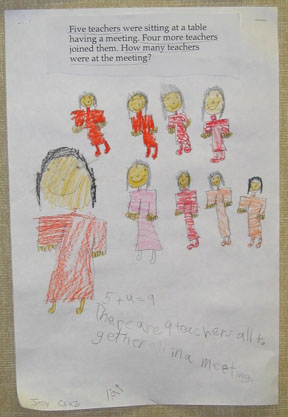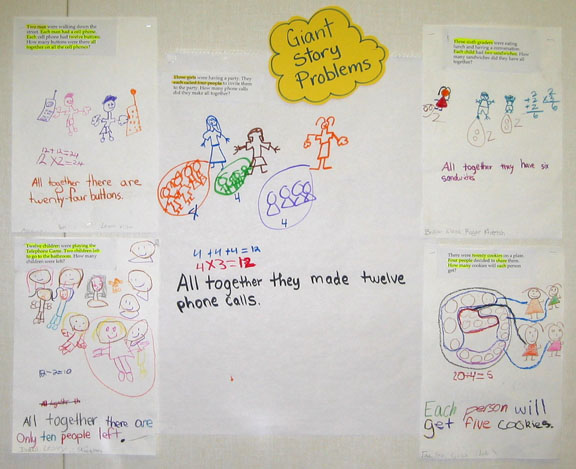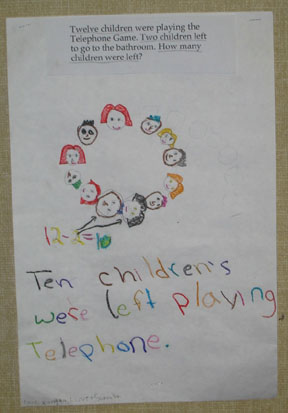|
Giant
Story Problems
Student
Work Samples
Giant Story
Problems
are introduced as a whole-class problem solving activity.The
story problem is written at the top of chart paper or typed with
a large font and glued on the paper. The problem is read aloud
and important words and information are highlighted. Student
volunteers draw a representation of the problem, making sure
that the drawing matches the language of the story problem. When
the drawing is complete, students are asked to provide equations
that will solve the problem. Finally, a sentence is written that
directly answers the question posed in the story problem.
For Kindergartners
and First Grade students who are still emerging readers, Giant
Story Problems is a great shared-writing activity. For other
grades, after a whole group introduction, it moves to small groups
working on a smaller scale, then becomes individualized for students
working alone on a normal-sized scale.
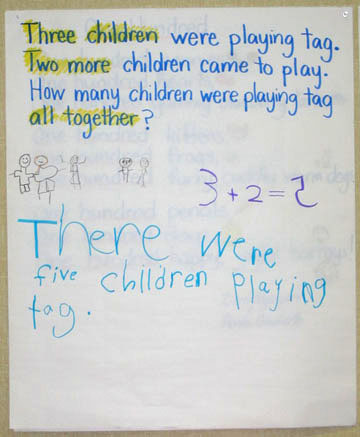 |
The story problem
at left was done as a whole group shared reading/shared writing
activity with a Kindergarten class. Students had been doing equations
with their fingers and with linker cubes, so they were familiar
with the addition sign. Students were asked to help read the
problem by using their knowledge of sight words and letter sounds.
I used careful, leading questioning to help children find and
highlight the important words, draw a picture that represented
the quantities in the problem, and then to write the equation
and the sentence that answers the question. The entire process
took about 20 minutes. Each picture, number, and word was written
by a different student.
The
story problem at right
was solved by 3rd and 4th grade students
in a mixed-age classroom.
|
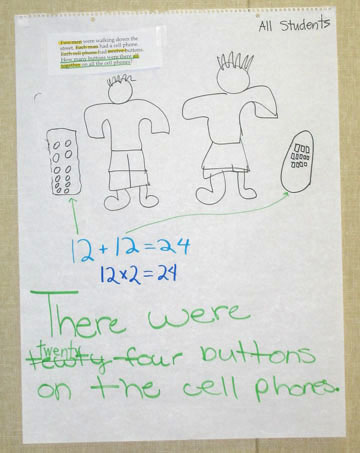 |
|
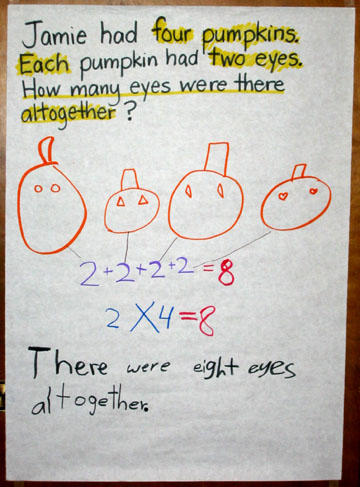
|
This pumpkin story
problem was done with a 2nd/3rd grade class that was just beginning
to work with multiplication. A second grade student offered the
addition problem, and a third grade student noticed that it could
also be solved with multiplication.
A 4th/5th
grade group collaborated on
this problem dealing with miles. Some discussion
was held before the start of the activity
about ways to represent a mile in a drawing.
|
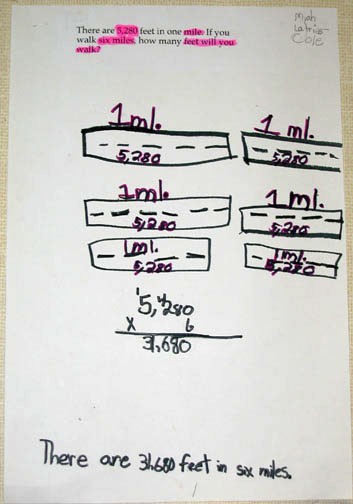 |
Small group work
is done on full sheets of white construction paper (12x18), following
the same process used with the whole group. In a multiage class,
younger students do the drawings, middle students do the equations,
and oldest students in the group write the sentences After this
collaborative activity, students then go on to their own story
problem work, individually or with partners, using regular-sized
individual story problems on white copier paper.
|




